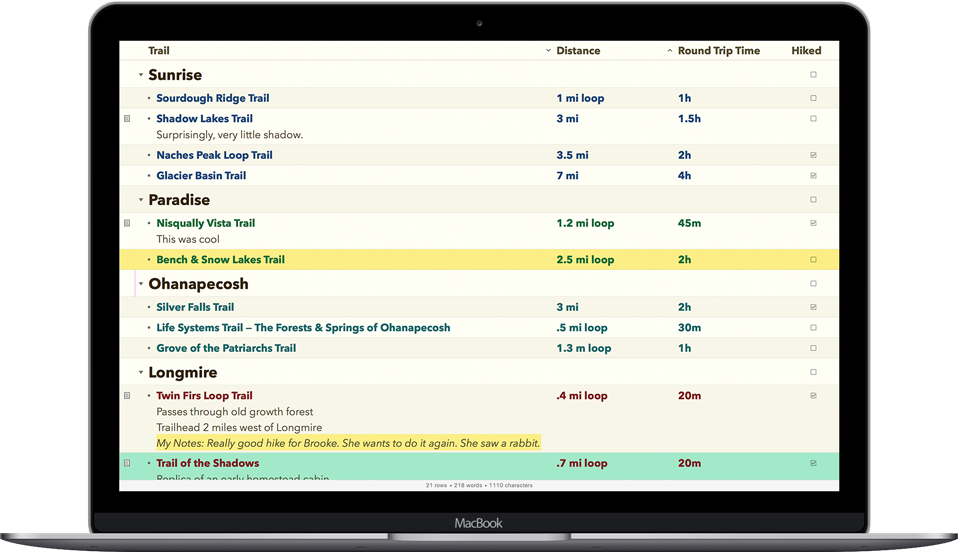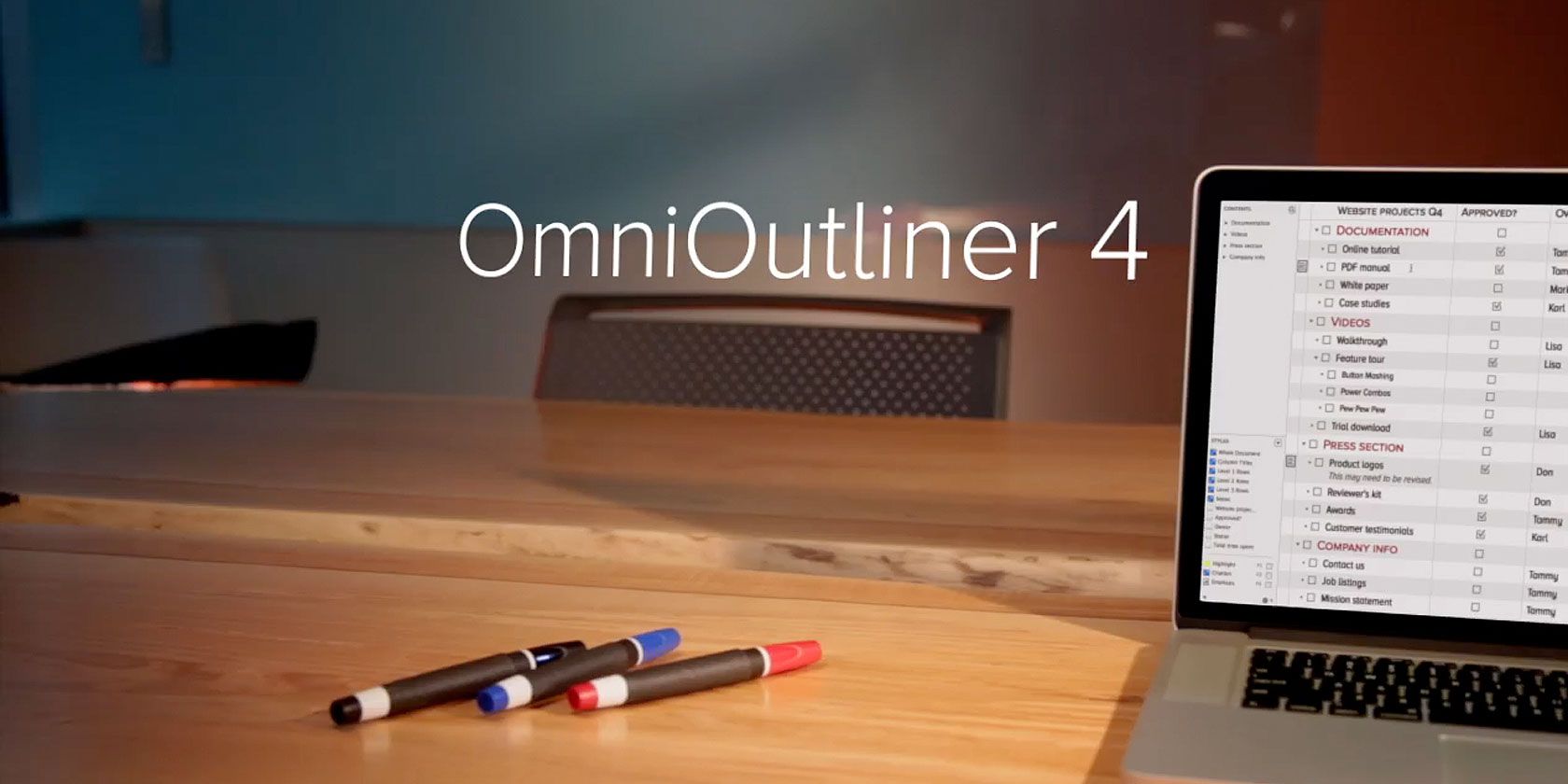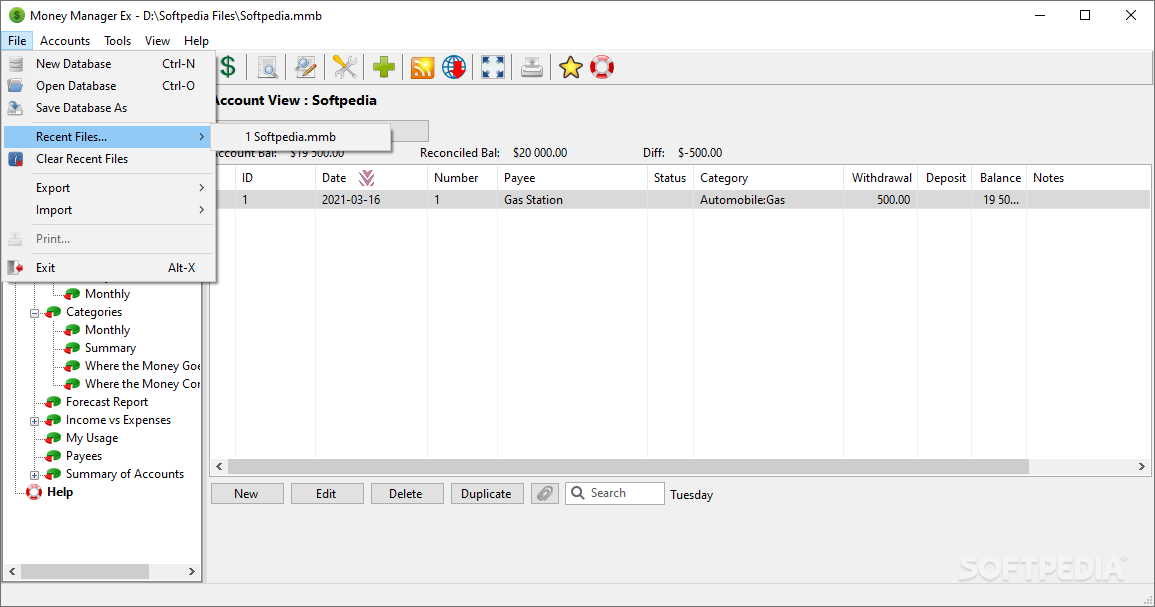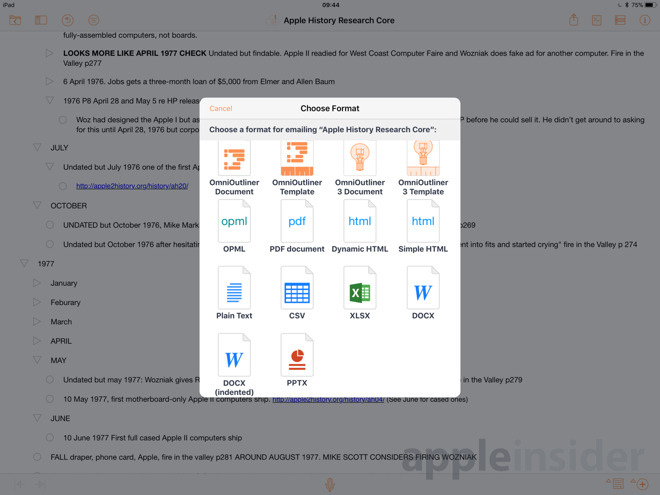

- #OMNIOUTLINER VS TASKPAPER HOW TO#
- #OMNIOUTLINER VS TASKPAPER PDF#
- #OMNIOUTLINER VS TASKPAPER UPDATE#
- #OMNIOUTLINER VS TASKPAPER PRO#
- #OMNIOUTLINER VS TASKPAPER MAC#
Not only is everything properly labeled, the Microsoftian subtabs are gone. I find OmniOutliner 4’s inspectors much easier to use.
#OMNIOUTLINER VS TASKPAPER HOW TO#
I hated the gear-all it meant was “we don’t know how to categorize this stuff.” In OmniOutliner 3, settings were hidden behind subtabs whose purpose was hard to remember. The style inspectors are now much easier to work with. The zoom control allows the best of both worlds.
#OMNIOUTLINER VS TASKPAPER PDF#
Font sizes that were comfortably readable on screen came out childishly huge on paper or PDF sizes that looked good in print were unreadable on screen. It always displayed the outline with one pixel equaling one point, a poor choice when monitors commonly run at 120 dpi or greater. You can see it here near the left end of the toolbar.įor years, the lack of this simple control was what I hated most about OmniOutliner. The biggest improvement is the addition of a zoom control.

And that’s where Omni’s made the most progress. To my mind, OmniOutliner’s functionality was never a concern it was its user interface that needed work. It’s the combination of these two, along with the improvements Omni’s made in version 4, that convinced me to stay with OmniOutliner. In these cases, the outline is the end product, not merely a means to an end, and the format of the output, especially when sent to a client, is important.


He’s also the inventor of the smart quotes algorithm, which most of us who care about typography use in one form or another. Opal is a capable little app from David Dunham, whom many of you old-timers will remember for the pre-OS X outliner, Acta, and the great desk accessory, miniWRITER. I don’t want to kick a man when he’s down, but I’d like to see Jesse pay more attention to Folding Text before I invest my time in learning it and altering my workflows to incorporate it. It sounds like something right up my alley, but it seems incomplete at the moment and isn’t getting official updates on a regular basis. Like TaskPaper, it saves files in a Markdownish plain text format and uses clues in the text to distinguish things like section headers, paragraphs, and lists from each other. It was more appealing when the iOS version was still available.įolding Text is the (relatively) new hotness from Jesse, and many people I think highly of are using it. Jesse Grosjean’s TaskPaper is very good for organizing tasks, and while it can be used as a general-purpose outliner, I’ve always run into limitations when trying to do so.
#OMNIOUTLINER VS TASKPAPER UPDATE#
Before I decided to update to OO4, I spent a week or two looking over the competition.
#OMNIOUTLINER VS TASKPAPER MAC#
The world of outlining on the Mac has changed a lot in the last 8-10 years, and I wouldn’t be surprised to find that many of OO3’s users abandoned it for apps like TaskPaper, FoldingText, or Opal web apps like Fargo or one of the outlining modes of text editors like TextMate or Sublime Text.
#OMNIOUTLINER VS TASKPAPER PRO#
After a very long wait, the Omni Group recently released OmniOutliner 4 in both Standard and Pro versions. It wasn’t the ideal outliner, but it was good enough, especially after I updated to the Pro version. When I returned to the Mac in 2005, my iBook G4 came with OmniOutliner preinstalled and that’s what I’ve used ever since. I’ve never been much for mind mapping, but I do like a good outline.


 0 kommentar(er)
0 kommentar(er)
